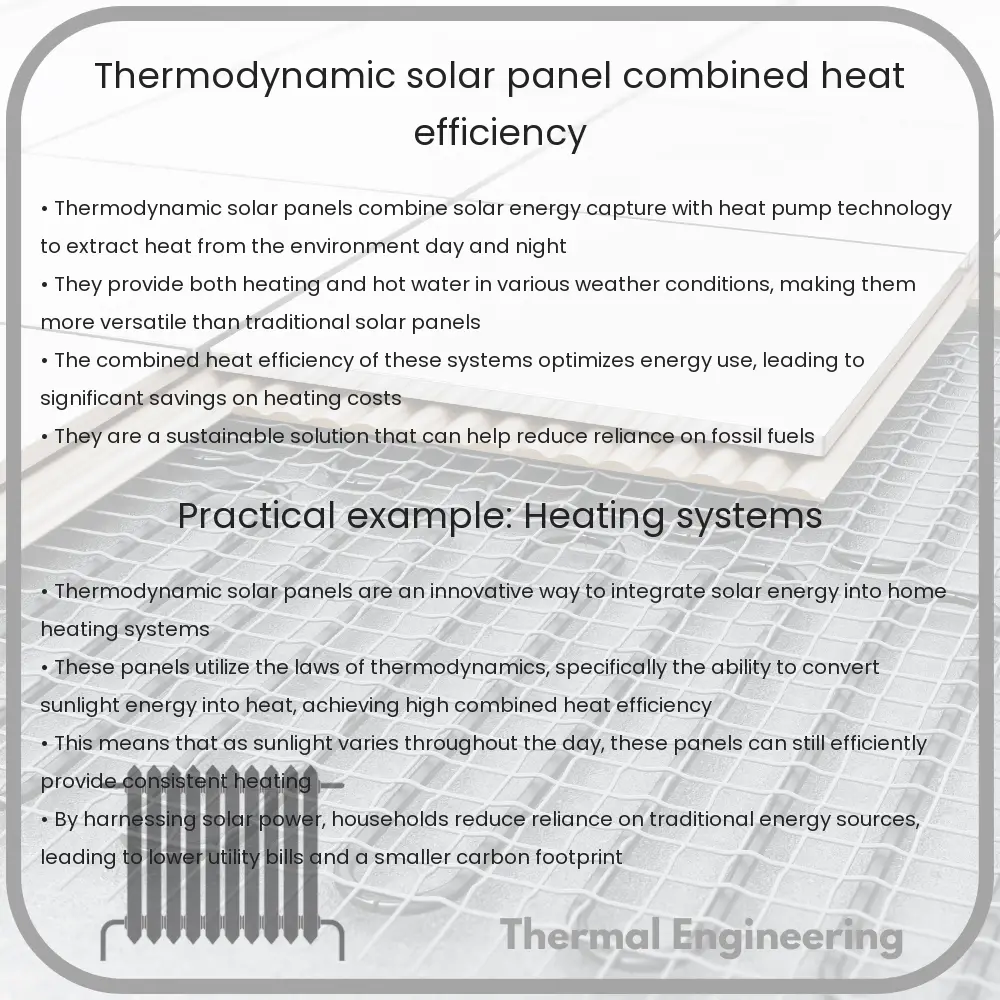Learn how thermodynamic solar panels enhance energy efficiency by utilizing both ambient air and solar energy to heat water in all weather conditions.

Understanding Thermodynamic Solar Panels and Combined Heat Efficiency
Thermodynamic solar panels represent an innovative fusion of heat pump technology with solar energy systems. Unlike traditional solar panels that either produce electricity (photovoltaic) or heat water (solar thermal), thermodynamic solar panels are designed to utilize ambient air temperature along with the sun’s energy to heat water, regardless of weather conditions. The key to their versatility lies in their combined heat efficiency, a concept crucial for maximizing energy utilization in residential and commercial applications.
How Thermodynamic Solar Panels Work
At the core of a thermodynamic solar panel system is a refrigerant fluid, which circulates through an external circuit. This circuit is exposed to ambient air and solar irradiation. Initially, the fluid absorbs heat from both the surrounding environment and the sun, which causes it to evaporate. The evaporated refrigerant then passes through a compressor, where its temperature is increased. Finally, this high-temperature gas transfers its heat to water in a storage tank via a heat exchanger, before it cools down and condenses back to a liquid, completing the cycle.
The Role of Combined Heat Efficiency
Combined heat efficiency in the context of thermodynamic solar panels refers to the system’s ability to collect and transform energy from multiple heat sources into usable heat. This efficiency is a critical metric as it dictates the operational effectiveness and sustainability of the system. By using both solar energy and ambient air, these panels can operate day and night, under various weather conditions, making them more reliable than traditional solar systems that rely solely on direct sunlight.
Advantages of Thermodynamic Solar Panels
- All-Weather Functionality: These panels can generate heat in different weather conditions, including rain, wind, and even at night, providing a consistent and reliable source of heat.
- Space Efficiency: Thermodynamic panels are generally compact and can be installed in a smaller area compared to the surface area required for traditional solar setups.
- Energy Savings: By harnessing the ambient air temperature and the sun’s energy, these systems reduce dependence on conventional electric or gas heating systems, leading to significant energy savings.
- Reduced Carbon Footprint: Using renewable energy resources helps in lowering the overall carbon footprint, contributing to environmental sustainability.
Challenges and Considerations
While thermodynamic solar panels offer numerous benefits, there are also challenges to consider. The initial installation cost can be higher than that of traditional solar panels owing to the complexity of the technology. Moreover, the efficiency of the heat pump depends on external temperatures; thus, performance might vary significantly between different climates. Maintenance and operational costs over time should also be factored into the total cost of ownership.
Conclusion
Thermodynamic solar panels with combined heat efficiency are a promising technology that bridges the gap between renewable energy use and continuous reliability. By efficiently converting ambient and solar energy into heat, these systems offer a sustainable solution for heating needs in various settings. As technology advances and becomes more cost-effective, it has the potential to become a mainstream solution for domestic and commercial energy needs.